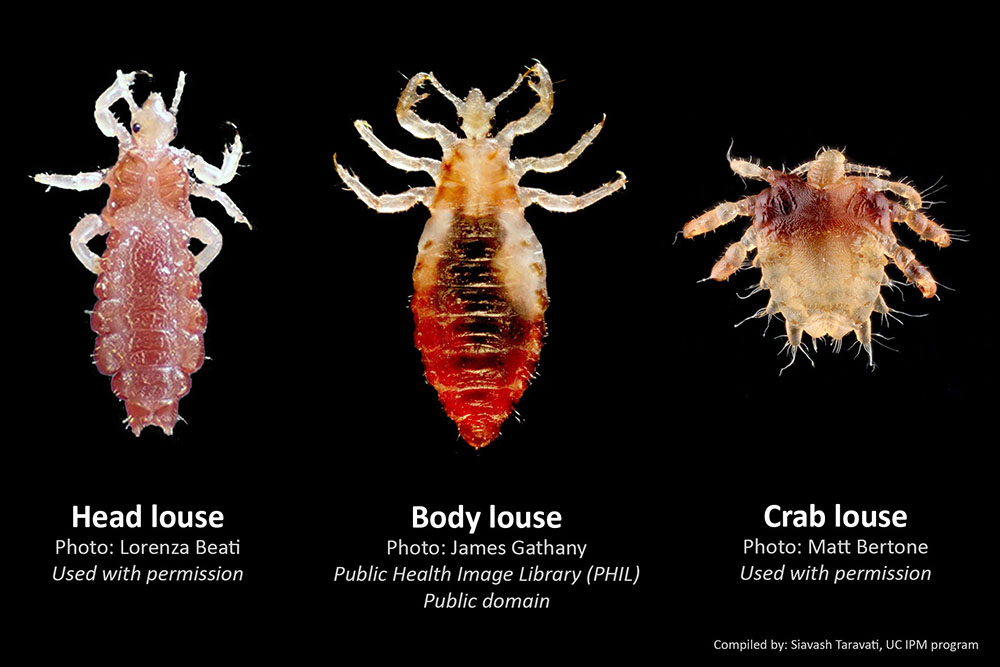By: Siavash Taravati, Ph.D.
Important: Please consider spending 30 seconds to submit a feedback to support my work: Click here
Published: 14 August 2019
There are three species of lice that exclusively feed on humans: 1) Head louse 2) Body louse 3) crab/pubic louse. Head louse (Pediculus humanus capitis) and body louse (Pediculus humanus humanus) are thought be conspecifics (member of the same species) but crab/pubic louse (Pthirus pubis) is a different species in a separate genus and family. All these species occur in structures and are of public health importance. Use the following description to identify each species.
Crab/pubic louse
Have a short and round body (not elongated), with hairy tubercles on abdomen. Front legs smaller and more slender than middle an hind legs (Fig. 1). That was easy, right? They are usually found on pubic hairs but sometimes on other areas of the body such as beard, mustache, eyelashes, and underneath the arms.
Head louse vs. body louse
Unlike the crab louse, these lice have elongated body (Fig. 1) and lack tubercles on their abdomen. But how you can differentiate between head and body lice? Well, they look very similar since they are members of the same species. So to identify them, you will need to look for more details. Table 1. summarizes some of their morphological and behavioral differences.

Table 1
| Head louse | Body louse | |
| Abdominal indentation | More obvious | Less obvious |
| Color (not always reliable) | Darker | Lighter |
| Antenna shape | Shorter and thicker | Longer and more slender |
| 3rd antennal segment | As long as wide | Slightly longer than wide |
| Oviposition site | Base of the hair | On clothing fibers |
| Spend time mostly on | Human head | On clothing |
| Disease transmission | Not known to be an effective vector of diseases even when the pathogen is found in the louse’s body | Known to transmit serious human diseases such as epidemic typhus, trench fever, and louse-borne relapsing fever |
References:
Cannings R. A. and Scudder G. G. E. Families of Phthiraptera of British Columbia: http://ibis.geog.ubc.ca/biodiversity/efauna/FamiliesofPhthirapteraofBritishColumbia.html
Bonilla DL, Durden LA, Eremeeva ME, Dasch GA (2013) The Biology and Taxonomy of Head and Body Lice—Implications for Louse-Borne Disease Prevention. PLoS Pathog 9(11): e1003724. https://doi.org/10.1371/journal.ppat.1003724
